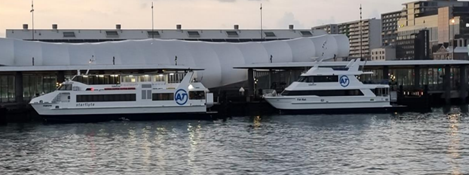Over the past year, Auckland Council has completed a review of how we are tracking toward making our city accessible for everyone to enjoy.
On the International Day of Persons with Disability, co-chair of the Disability Advisory Panel Barry de Geest reflects on the progress made and explains how this has helped set a new benchmark in Tāmaki Makaurau.
“For disability panel members, this year has been a fantastic year because we can see that the advice we’ve provided is really making a difference in our communities,” Mr de Geest says.
“Council staff and key decision-makers, including Mayor Wayne Brown, are keen to engage and hear our suggestions and to keep working with us to find solutions. We feel there is more recognition that input from the panel is valued in the early stages of planning projects, and this is helping to shape better outcomes.”
The council’s policy team has improved the way progress is monitored on actions prioritised in the Disability Operational Action Plan, so that regular updates can be given to the Disability Advisory Panel. This plan aligns with the Auckland Plan 2050 and Ngā Hapori Momoho Thriving Communities Strategy 2022-2032 to ensure everyone in Auckland can participate and feel that they belong, especially those facing the greatest barriers.
In the council’s most recent update to the advisory panel in September, a total of 29 projects have been rolled out to improve accessibility across the region and another 35 are ongoing.
They include measures to remove language barriers, improve communications, and update design guidelines to improve accessibility in the private sector.
Councillor Julie Fairey, chief liaison officer for the panel, says the advice provided by panel members this year has been invaluable for making Auckland safer and more accessible.

Auckland Transport has introduced multiple measures this year to make ferries more accessible.
“At any one time around a quarter of New Zealanders identify as being disabled, with many experiencing disability in an ongoing way or at specific points throughout their lives. It’s important we work together to remove barriers so that everyone can fully participate in their community” Cr Fairey says.
Auckland Transport has also worked closely with the Disability Advisory Panel to make considerable progress this year on the Auckland Transport Accessibility Action Plan, enhancing the city’s transport system with accessibility improvements.
This includes measures to make ferries more user-friendly, like reducing the height of door sills so wheelchairs and prams can easily move around, installing extra handrails, and including New Zealand Sign Language in on-board safety videos.
Visual service updates have started at Waitematā /Britomart train station featuring New Zealand Sign Language, along with English and reo Māori scripting, resulting in the first public announcements in all three languages.

For the first time in New Zealand, public service announcements have been made this year using New Zealand Sign Language, English scripting and reo Māori at Waitematā /Britomart train station.
Audio announcements including reo Māori have been rolled out on 1,228 buses around Tāmaki Makaurau. New ramps and ground markings that improve accessibility are ongoing. Drivers and ferry operators have received additional training this year to help them provide support to passengers with low vision.
Mr de Geest says while these changes will be a huge positive for many passengers with disabilities, they will also ensure an enhanced travel journey for all commuters – as accessibility improvements result in wider community benefits.
“These measures are certainly not insignificant. We see an overall improved experience for so many others who previously struggled to take part – like the elderly, or young children, and carers or family members,” he says.
The Disability Advisory Panel members remain committed to sharing their knowledge and lived experiences so that further improvements can be delivered by the council and wider council group, Mr de Geest says.
“As people living with disabilities, we don’t just see the problem – we are absolutely committed to try and come up with solutions,” he says.


